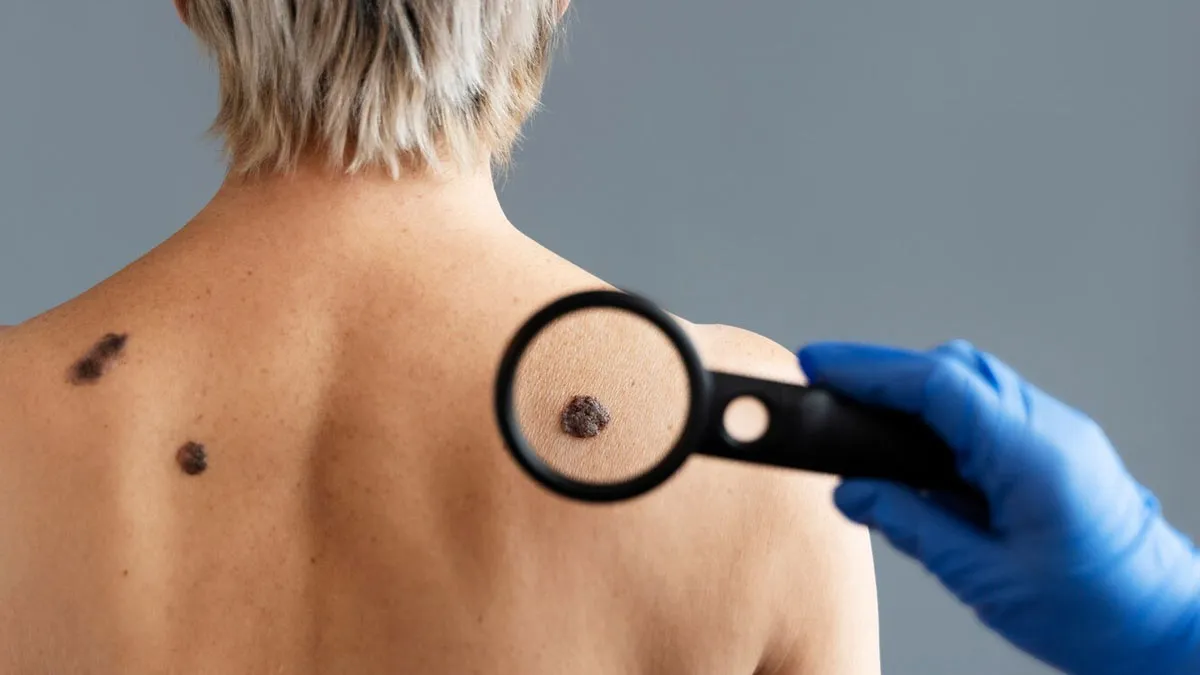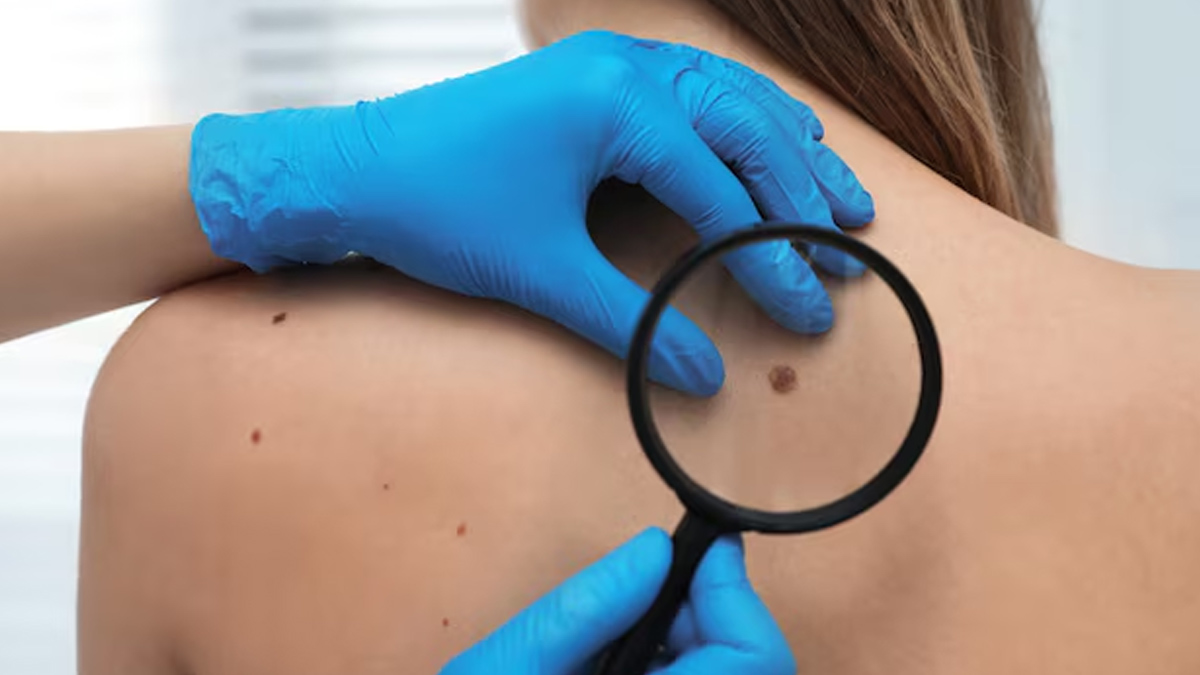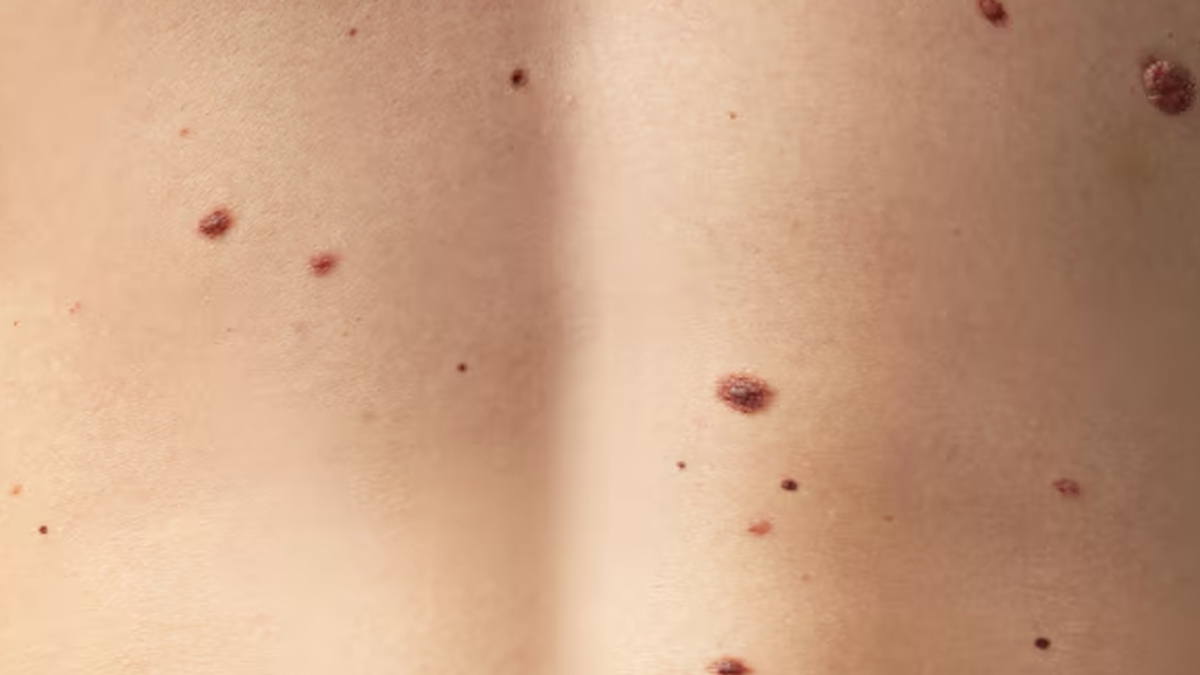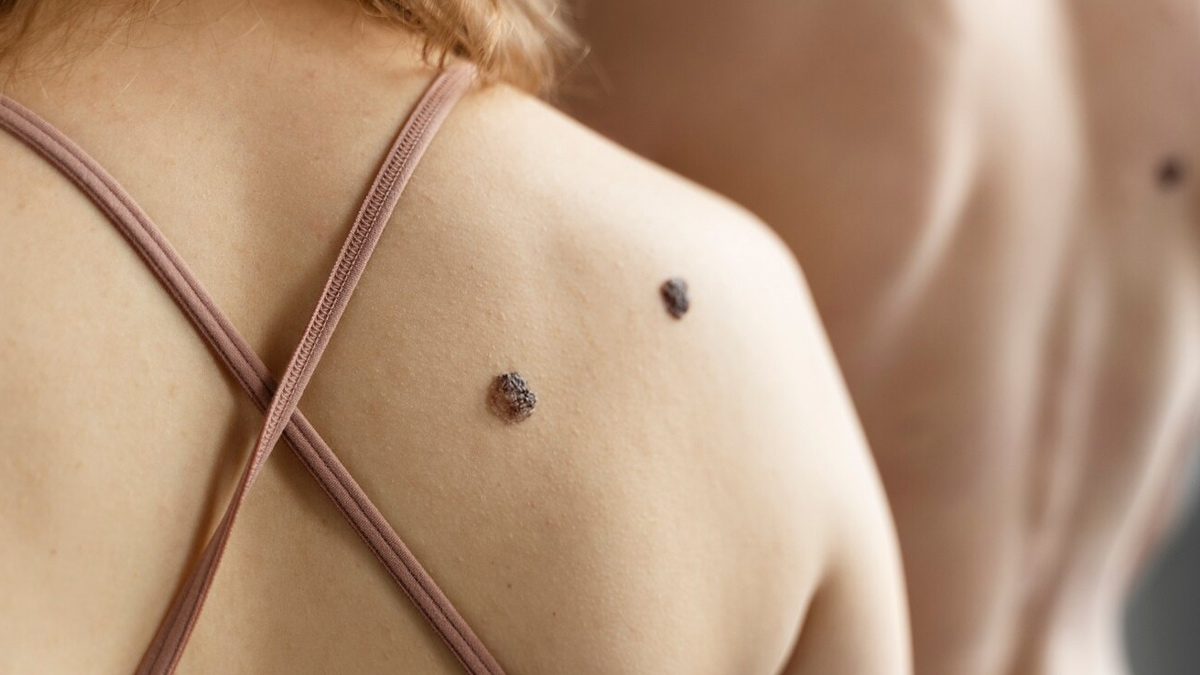
Skin cancer is reportedly the most common type of cancer worldwide, with non-melanoma skin cancers being the most prevalent. While skin cancer is more visible, given that the skin is the largest organ in the body, the types and locations of the skin changes can make it harder to spot, emphasising the importance of regular skin checks and medical examinations.
Table of Content:-
During assessments, one of the most important things to understand is one's risk factors, which include heightened sun exposure, family history, genetics, and more. However, some people wonder whether having more moles than others makes them more prone to developing skin cancer. Here's what an expert has to say about the same.
Also Read: When Should You Start Worrying About A Mole?
Is There A Link Between The Number Of Moles And Skin Cancer Risk?

In an interaction with the OnlyMyHealth team, Dr Sanjib Chowdhury, Senior Consultant Dermatologist, Fortis Hospital, Anandapur, says that having a large number of moles, typically more than 50, is associated with a higher risk of developing melanoma.
He adds that there is a direct link between a higher number of moles and an increased risk of melanoma, a type of skin cancer, especially when combined with the presence of atypical or dysplastic moles.
Atypical moles, also known as dysplastic nevi, are unusual-looking moles that can be larger and irregularly shaped, and while they are not cancerous themselves, they are a risk factor for developing melanoma, a potentially deadly form of skin cancer.
According to the National Cancer Institute (NCI), a dysplastic nevus rarely turns into melanoma but is a risk factor for it. The more dysplastic nevi a person has, the higher their risk. Research suggests that having more than five dysplastic nevi increases melanoma risk tenfold.
What Types Of Moles Are More Concerning?

Atypical or dysplastic nevi are considered more concerning types of moles. These moles are unusual in shape, colour, or size and can be a sign of increased risk for melanoma. They are often:
- Larger-than-average moles
- Irregularly shaped
- Varied in colour, with shades of brown, tan, pink, or red
- Raised or flat
How To Identify Skin Cancer-Related Moles
To monitor moles for signs of skin cancer, follow the ABCDE rule, says Dr Chowdhury.
- A. Asymmetry: If the mole is not symmetrical
- B. Border: If the edges are irregular, notched, or scalloped
- C. Colour: If the colour is uneven, with shades of brown, tan, pink, or red
- D. Diameter: If the mole is larger than 6mm in diameter
- E. Evolving: If the mole changes in size, shape, or color over time
Additionally, it is crucial to conduct regular self-exams to familiarise yourself with your moles, check for new moles or changes in existing ones, use a mirror to examine hard-to-see areas, and consult a doctor or dermatologist if you notice any suspicious changes or have concerns.
Sun Exposure And Skin Cancer Risk

Sun exposure plays a major role in mole development and skin cancer risk. Here's how:
- Ultraviolet (UV) radiation from the sun or tanning beds can cause moles to form and existing moles to change.
- Prolonged sun exposure, especially during peak hours (10am-4pm), increases the risk of developing melanoma.
- UV radiation can damage skin cells' DNA, leading to mutations that can cause moles to become cancerous.
- Sunburns, especially in childhood and adolescence, significantly increase the risk of developing melanoma later in life.
Tips For People With Many Moles
People with many moles should take extra precautions for skin health. These include:
- Conduct regular self-exams to monitor moles for changes.
- Schedule annual skin checks with a dermatologist.
- Protect skin from the sun using sunscreen, clothing, and hats.
- Avoid tanning beds and artificial UV radiation.
- Be aware of your family medical history, especially if there's a history of melanoma.
- Consider total-body photography to track changes in moles over time.
Conclusion
Skin cancer can be life-threatening; however, watching out for the early signs, assessing risk factors, and getting regular skin screenings can help detect it early and get timely treatment. One of the common risk factors includes a large number of moles on the body, which is more concerning if they belong to the atypical mole type. Doctor consultation is highly recommended, especially for people who have several moles or if they notice skin changes associated with skin cancer.
Also watch this video
How we keep this article up to date:
We work with experts and keep a close eye on the latest in health and wellness. Whenever there is a new research or helpful information, we update our articles with accurate and useful advice.
Current Version